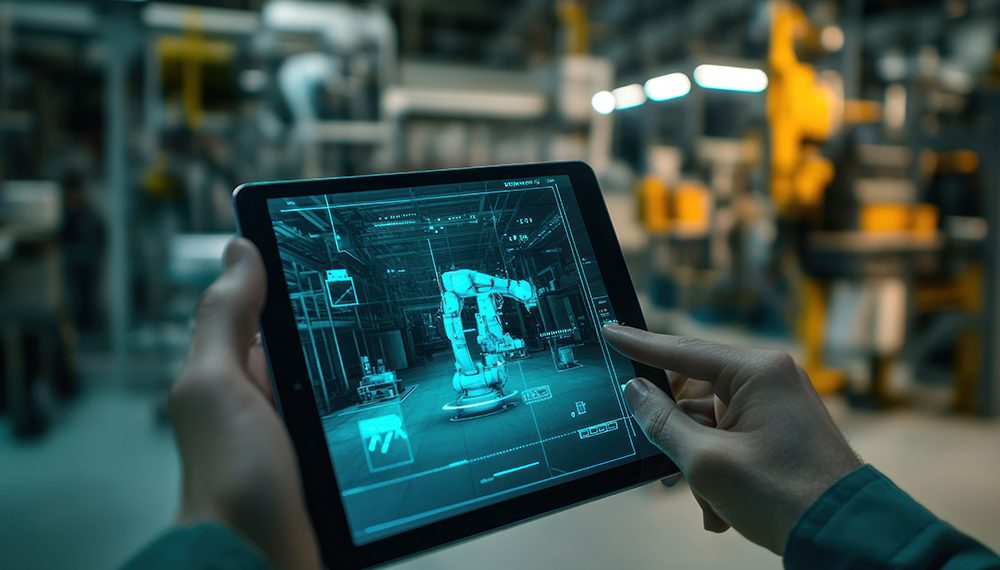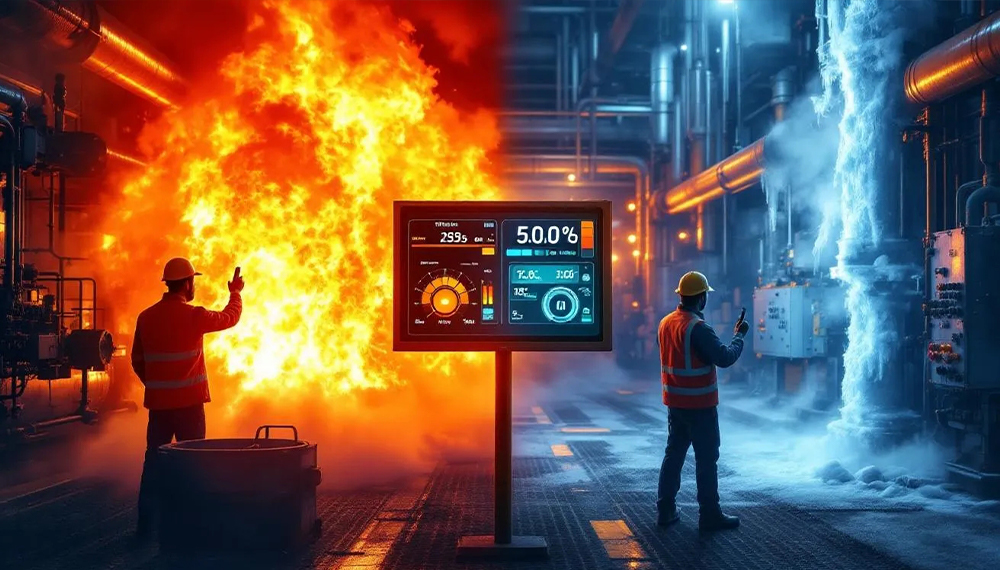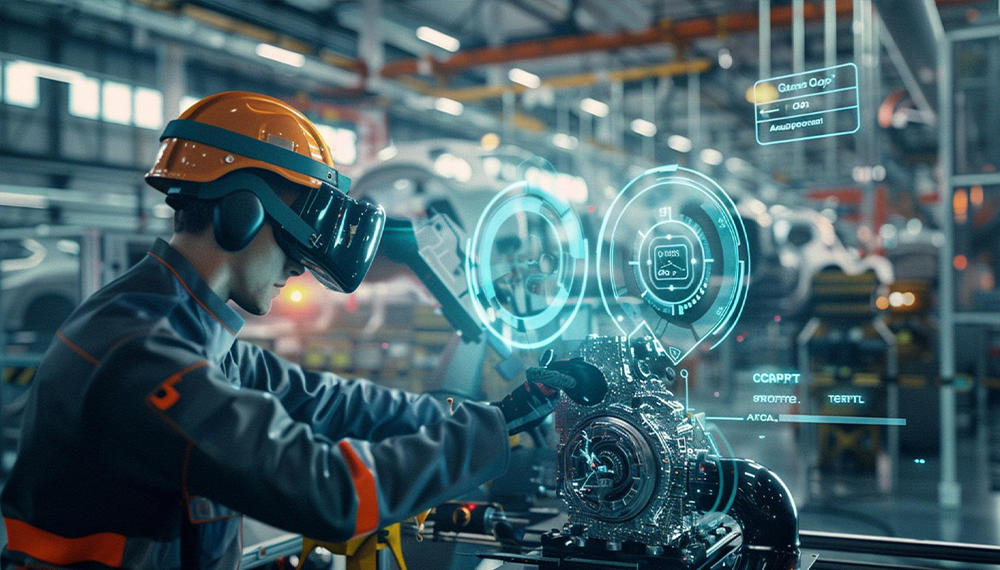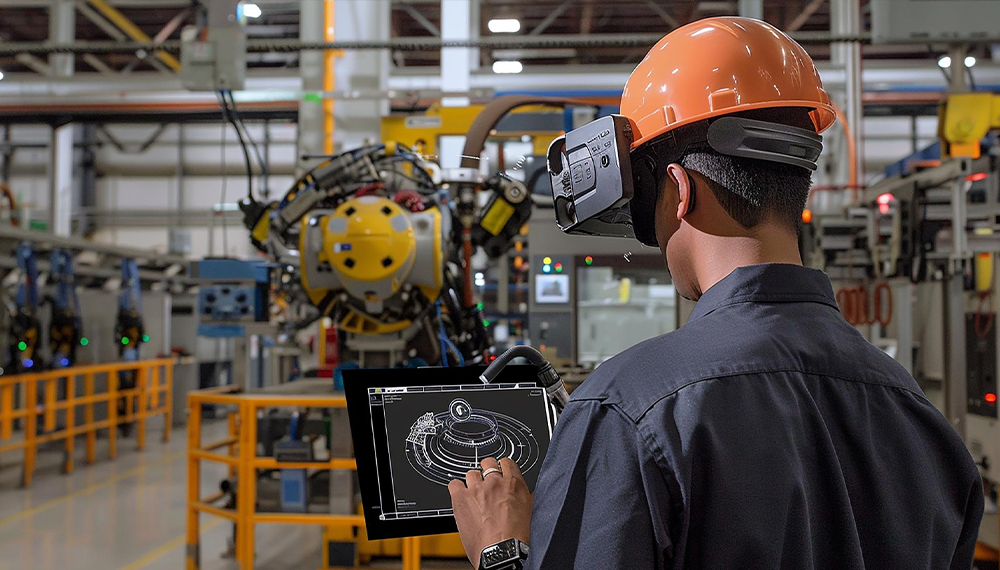Why Factories Can’t Afford to Stay Old-School
Factories are the beating heart of every economy. They build the cars we drive, the machines we use, and even the food we eat. But running a factory today is not like it was 20 years ago. Customers expect faster delivery, flawless quality, and lower costs. At the same time, machines must run efficiently, and safety rules are stricter than ever.
This is where two powerful ideas step in: the real-time factory monitoring system and smart factory automation with AR. Together, they are reshaping industries, making factories not only more productive but also smarter and safer.
What Is a Real-Time Factory Monitoring System?
Think of a real-time factory monitoring system like the dashboard in a car. A driver can instantly see speed, fuel level, and warning lights. In the same way, a factory manager can instantly see how machines are performing, how many items are produced, and if something is going wrong.
A good real-time factory monitoring system does more than just show numbers. It collects data from machines, production lines, and even workers. Then it transforms that data into useful insights—like spotting delays, predicting maintenance needs, or identifying waste. With this, managers can fix issues quickly before they grow into costly problems.
The Magic of Smart Factory Automation with AR
Now imagine combining that monitoring power with smart factory automation with AR. AR (Augmented Reality) overlays digital information on the real world. In factories, this means workers wearing AR glasses or using tablets can see instructions, alerts, or machine data directly in front of them.
With smart factory automation with AR, workers don’t have to flip through manuals or guess what’s wrong. Instead, they get step-by-step repair guides, safety warnings, or real-time production stats right on their screens. This makes training easier, repairs faster, and errors fewer.
How They Work Together
When a real-time factory monitoring system is linked with smart factory automation with AR, the factory becomes truly intelligent.
- The monitoring system collects and analyzes data.
- AR tools display that data in the most helpful way.
- Workers act instantly with the right information at the right time.
For example, if a machine overheats, the system detects it and sends an alert. Through AR glasses, a technician can see exactly which part needs attention and how to fix it—without wasting time or risking safety.
Industries Already Benefiting
Automotive
Car manufacturers use a real-time factory monitoring system to track each step of vehicle assembly. At the same time, smart factory automation with AR helps workers assemble parts correctly with digital overlays.
Electronics
Tiny mistakes can ruin expensive electronics. Monitoring systems catch irregularities instantly, while AR tools guide technicians during repairs or quality checks.
Food and Beverages
Food factories use monitoring to keep machines running smoothly and to track hygiene compliance. AR helps workers follow safety rules and avoid contamination.
Logistics and Warehousing
Real-time data helps manage supply chains, while AR navigation makes finding and picking items faster and more accurate.
The Benefits Everyone Understands
When factories adopt these tools, here’s what happens:
- Less downtime: Machines are fixed before they break.
- Higher productivity: Workers get clear, real-time guidance.
- Better quality: Errors are reduced because instructions are always visible.
- Lower costs: No wasted time, energy, or raw materials.
- Safer environments: Workers get alerts about hazards instantly.
In short, a real-time factory monitoring system ensures managers always know what’s happening, while smart factory automation with AR makes sure workers always know what to do.
Trends Shaping the Future
Factories are becoming smarter every year. Some key trends include:
- AI + Machine Learning: Predicting failures before they happen.
- Cloud Dashboards: Accessing factory performance from anywhere.
- Mobile Alerts: Getting system updates directly on your phone.
- Immersive AR Training: Training workers in virtual environments before they step onto the factory floor.
- Green Manufacturing: Using monitoring and AR to reduce energy waste and improve sustainability.
These trends show that real-time factory monitoring system tools and smart factory automation with AR aren’t just a passing phase—they’re the foundation of future industries.
Why Partnering With the Right Brand Matters
Technology is only as good as the people behind it. Choosing the right partner for your real-time factory monitoring system ensures you get accurate data, reliable software, and strong support. Similarly, adopting smart factory automation with AR requires expertise to design solutions that fit your unique factory setup.
A trusted brand will not only provide the tools but also train your team, keep systems updated, and help you get the most value from your investment.
The Final Word
Factories no longer compete on muscle alone—they compete on intelligence. A real-time factory monitoring system provides the eyes and ears of your operations, while smart factory automation with AR gives your workers the superpowers they need to act quickly and correctly. Together, they make your factory faster, smarter, and safer.
If you want to stay ahead in today’s fast-changing world, it’s time to embrace both. The future of manufacturing is happening now—and it belongs to those who monitor smarter and automate with vision.




